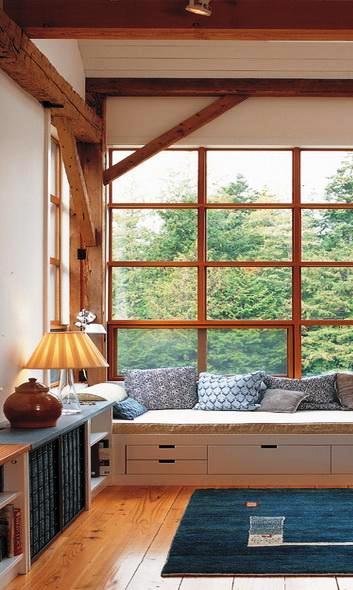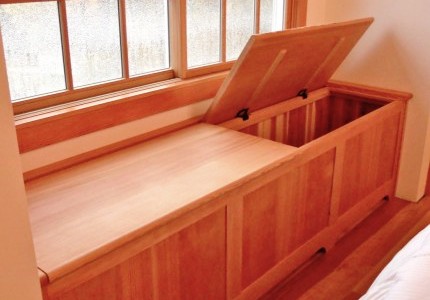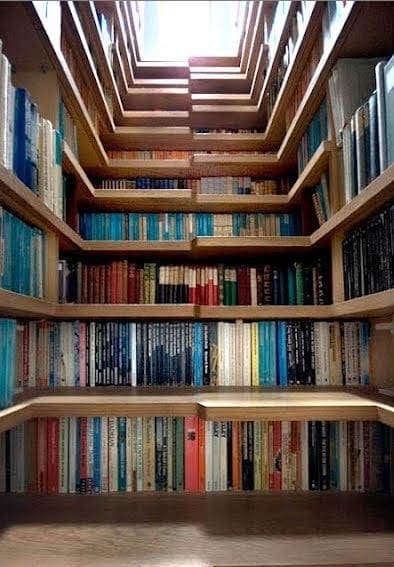
One of the ideas you will most often hear from homeowners is their enthusiasm for well-designed spaces. This can mean many different things for different people, but more often than not, it also encompasses longing for clever built-in storage areas and crafty furniture.
Built-in furniture for your home can be a very simple affair, from using humble two-by-fours and a piece of plywood to an elegant solution with the highest quality material – such as windowsill seating seamlessly flowing around the bay windows framing the main living space of your home. Built-in pieces no longer carry the stigma of poorly made fold-outs and cheap plastic materials. Instead, built-in furniture has become a symbol of true creativity and exceptional functionality – at least in the circle of passionate homeowners.
Whatever home decorating style may take your fancy, built-ins can provide extra space and dual-purpose utility you cannot get with traditional furniture. Imaginative hideaways, concealment furniture, or strategically placed cabinets can mean the difference between crowded stuffiness and the comfortable, inviting atmosphere you aim to achieve in your home. Below are a few ideas to consider when designing your built-ins for your small home.

Seating
No matter your home size, you will need some seating available for you and your guests. Built-in seating is a great option to use in otherwise overlooked spaces, such as, oddly shaped corners. Moreover, fold-down, cabin-style built-in seating can offer on-demand comfort for visitors along busy walls of high-traffic areas. They are also easy to make with sturdy bolts, a pair of quality hinges, and a nice piece of thick-cut lumber or composite material that fits your style. These seats will naturally compliment your home. Another option for built-in furniture is wide window sill seating, which you will often find in older homes. You can easily carry over the timber to frame your windows and create a cozy nook for a romantic look that will accentuate the beauty of your beams.

Cabinets
Placing an adequate amount and size of cabinetry can be a difficult task in a home. Do not be afraid to be creative when finding alternative solutions. For instance, there is no rule against building cabinets in the style of traveling chests with the lids opening upwards or with doors that slide over the side. Placing pre-built cabinets can be especially challenging in log homes. Uneven walls and protruding logs can throw off your calculations, and often, you will not even know about the extent of the problem until you are in the middle of your work. A good way to circumnavigate the problem is to use the logs that extend into your home to create a wall frame that you can fill in with cabinets as needed. This wall can also serve as the semi-detached separation between different living spaces or become a multifunctional feature to block airflow in your home, such as between your kitchen and your arctic entry.
Storage
Who does not want to have more storage? Even if you do not live in a small home, unique ways of creating extra room for your possessions is worth every effort. Think about spaces you normally write off because they are too high off the floor or tucked away behind a door. You can easily build drawers into the steps of your staircase to hide knickknacks or to safely store cherished photo albums and scrapbooks. The area above your door can be safe for bulky but light items such as extra bedding or empty suitcases. If you have a framed home in mind, use a wall between rooms to build deep drawers from top to bottom, filling up the space by dividing it in half on either side of the wall. With this technique, you can create an unexpected storage area for two rooms, with the added benefit of extra soundproofing. Specific constructions naturally lend themselves to creating helpful storage spaces. Timber frame homes, for instance, do not require the placement of load-bearing walls inside the house, providing you with extra space to fill in with storage as your heart desires.
Beds
Hideaway beds can be the best thing since sliced bread for the small homeowner. With timber frame construction, you can easily create a casing for your folded-up bed on one of your walls. It might be slightly more challenging for log homes to develop space-saving bedding solutions, but it is not impossible. If you have young children or family members at heart, you will enjoy creating a wall of bunk beds, each with its private cubbies and curtains. You can even build a steep staircase into the wall for added security and create access points through the foot of each bed. Another simple option is to use two-by-four lumber and a sheet of plywood to build a platform bed and use a nice quality tongue and groove to create a luxurious headboard on the wall. You can also quickly transform it into a captain’s bed by adding drawers underneath and bookcases at the foot.

Desks
One piece of furniture we tend to give up in small homes is a solid work surface, such as a desk. Of course, we mean to add it all along, but for one reason or another, we justify its omission by thinking we can work on our laptops in an armchair or on the sofa. This does not have to be the case. Look at unused corners and awkward spaces, which usually make excellent work surfaces. With some creativity, you can turn that place under your stairs into a mini office with a built-in desk, bookcases, drawers, and filing cabinets. How about a fold-down desktop you can pull out from the side of your built-in bench or a pair of desks built into a false wall from either side? There is always a way to find some extra room to accommodate your needs as long as you keep an open mind and are willing to experiment.
Great Blog. You have explained everything in few words.
Thanx for sharing your ideas. Keep it up
Thank you!